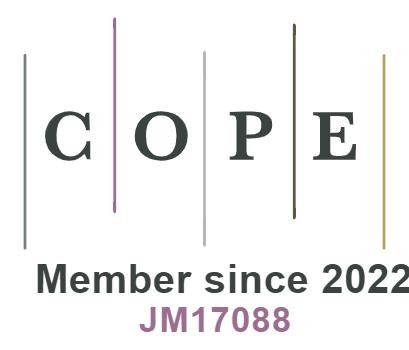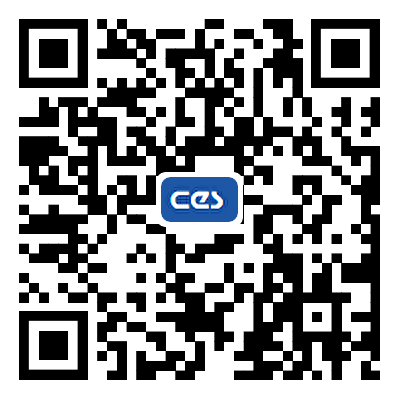REFERENCES
1. Gong J, Lu C, Liu Q, Huang J. Uncertain mission planning for earthquake rescue based on scenario. Proceedings of the 2022 IEEE 2nd international conference on electronic technology, communication and information (ICETCI), Changchun, China, 27-29 May 2022; pp. 586-92.
2. Yue L, Yang R, Zhang Y, Yu LX, Wang Z. Deep reinforcement learning for UAV intelligent mission planning. Complexity 2022;2022:3551508.
3. Kase SE, Hung CP, Krayzman T, Hare JZ, Rinderspacher BC, Su SM. The future of collaborative human-artificial intelligence decision-making for mission planning. Front Psychol 2022;13:850628.
4. Xu J, Liu T, Tian W, Wang X, Zhang J, Chen Y. Safety risk assessment based on reloading airdrop mission. E3S Web Conf 2021;257:02084.
5. Zhang Y, Zuo F. Selection of risk response actions considering risk dependency. Kybernetes 2016;45:1652-67.
6. Dixit V. Risk assessment of different sourcing contract scenarios in project procurement. Int J Constr Manag 2022;22:1537-49.
7. Lin SS, Shen SL, Zhou A, Xu YS. Risk assessment and management of excavation system based on fuzzy set theory and machine learning methods. Automat Constr 2021;122:103490.
8. Li Y, Hu Z. A review of multi-attributes decision-making models for offshore oil and gas facilities decommissioning. J Ocean Eng Sci 2022;7:58-74.
9. Duan L, He J, Li M, et al. Based on a decision tree model for exploring the risk factors of smartphone addiction among children and adolescents in China during the COVID-19 pandemic. Front Psychiatry 2021;12:652356.
10. Wu J, Gong H, Liu F, Liu Y. Risk Assessment of open-pit slope based on large-scale group decision-making method considering non-cooperative behavior. Int J Fuzzy Syst 2023;1:245-63.
11. Ikwan F, Sanders D, Hassan M. Safety evaluation of leak in a storage tank using fault tree analysis and risk matrix analysis. J Loss Prevent Proc Ind 2021;73:104597.
12. Zheng HL, Du WW, Zhao XX, Shi H. Operational conception risk assessment model. Fire Control Command Control 2021;4:110-5;121.
13. Song YB, He JL, Sun JZ, Xu T. Evaluation on joint operation determination scheme. Command Inf Syst Technol 2016;4:49-54.
14. Ryczynski J, Tubis AA. Tactical risk assessment method for resilient fuel supply chains for a military peacekeeping operation. Energies 2021;14:4679.
15. Kim I, Kim S, Kim H, Shin D. Mission-based cybersecurity test and evaluation of weapon systems in association with risk management framework. Symmetry 2022;14:2361.
16. Zhang Y, Liu J, Xie X, Wang C, Bai L. Modeling of project portfolio risk evolution and response under the influence of interactions. Mathematics 2023;11:4091.
17. Abedzadeh S, Roozbahani A, Heidari A. Risk assessment of water resources development plans using fuzzy fault tree analysis. Water Resour Manag 2020;34:2549-69.
19. Lei S, Peng XR, Li XS. Research on the evaluation of national defense science and technology strategic intelligence research capability based on QFD. Inf Stud Theory Appl 2022;2:55-60.
21. Zhang D, You X, Liu S, Yang K. Multi-colony ant colony optimization based on generalized jaccard similarity recommendation strategy. IEEE Access 2019;7:157303-17.
22. Chung NC, Miasojedow B, Startek M, Gambin A. Jaccard/Tanimoto similarity test and estimation methods for biological presence-absence data. BMC Bioinformatics 2019;20:1-11.
23. Hsu WK, Chen J, Huynh NT, Lin Y. Risk assessment of navigation safety for ferries. J Mar Sci Eng 2022;5:700.
24. Yu Y, He X, Wan F, Bai Z, Fu C. Dynamic risk assessment of karst tunnel collapse based on fuzzy-AHP: a case study of the LianHuaShan tunnel, China. Adv Civil Eng 2022;2022:4426318.
25. Li K, Xiahou X, Huang H, et al. AHP-FSE-Based risk assessment and mitigation for slurry balancing shield tunnel construction. J Environ Public Health 2022;2022:1666950.
26. Fan C, Deng B, Yin Y. Hierarchical structure and transfer mechanism to assess the scheduling-related risk in construction of prefabricated buildings: an integrated ISM–MICMAC approach. Eng Constr Archit Manag 2023;30:2991-3013.
27. Chen Y, Lou N, Liu G, Luan Y, Jiang H. Risk analysis of ship detention defects based on association rules. Mar Policy 2022;142:105123.
28. Song W, Zhu Y, Li S, Wang L, Zhang H. Risk evaluation of information technology outsourcing project: an integrated approach considering risk interactions and hierarchies. Eng Appl Artif Intell 2022;113:104938.
29. Wei DT, Liu XD, Guo R. Research on strategic consistency evaluation method of equipment system based on improved DEMATEL-ISM-FCA. Military Oper Res Assess 2021;3:29-35.
30. Mathiyazhagan K, Govindan K, NoorulHaq A, Geng Y. An ISM approach for the barrier analysis in implementing green supply chain management. J Clean Prod 2023;47:283-297.
31. Ajmera P, Jain V. A fuzzy interpretive structural modeling approach for evaluating the factors affecting lean implementation in Indian healthcare industry. Int J Lean Six Sigma 2019;2:376-97.
32. Wang M, Zhang Y, Tian Y, Zhang K. An integrated rough-fuzzy WINGS-ISM method with an application in ASSCM. Expert Syst Appl 2023;212:118843.
33. Amini A, Alimohammadlou M. Toward equation structural modeling: An integration of interpretive structural modeling and structural equation modeling. J Manag Anal 2021;4:693-714.
34. Ahmad N, Qahmash A. Smartism: implementation and assessment of interpretive structural modeling. Sustainability 2021;16:8801.
35. Niati DR, Siregar ZME, Prayoga Y. The effect of training on work performance and career development: the role of motivation as intervening variable. BIRCI J 2021;2:2385-93.
36. Heri S, Nur AY, Mohd H, Rico NI, Irada S. Relationship between budget participation, job characteristics, emotional intelligence and work motivation as mediator variables to strengthening user power performance: an emperical evidence from indonesia government. Morfai J 2021;1:36-48.
37. Hirdinis M. Capital structure and firm size on firm value moderated by profitability. Int J Econ Business Admin 2019;VⅡ:174-91.
38. Poduval PS, Pramod VR, Raj VPJ. Interpretive structural modeling (ISM) and its application in analyzing factors inhibiting implementation of total productive maintenance (TPM). Int J Qual Reliab Manag 2015;3:308-31.
39. Sarabi S, Han Q, Romme AGL, de Vries B, Valkenburg R, den Ouden B. Uptake and implementation of nature-based solutions: an analysis of barriers using interpretive structuralmodeling. J Environ Manag 2020;270:110749.
40. Sharma A, Abbas H, Siddiqui MQ. Modelling the inhibitors of cold supply chain using fuzzy interpretive structural modeling and fuzzy MICMAC analysis. Plos One 2021;16:e0249046.
41. Zhu Y, Tian D, Yan F. Effectiveness of entropy weight method in decision-making. Math Problems Eng 2020;2020:3564835.
42. Nor-Al-Din SM, Razali NK, Sukri NM, Rosli MA. Application of TOPSIS method for decision making in selecting the best new car in Malaysia. IOP Conf Ser Mater Sci Eng 2021;1176:012040.
44. Siregar VMM, Sonang S, Purba AT, Sugara H, Siagian NF. Implementation of TOPSIS algorithm for selection of prominent student class. J Phys Conf Ser 2021;1783:012038.







